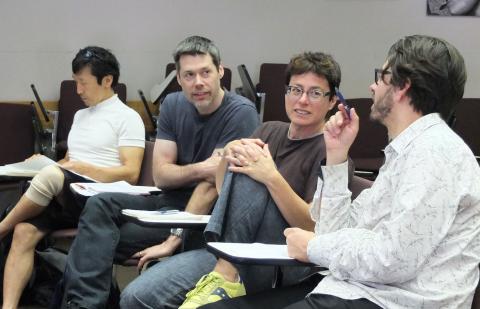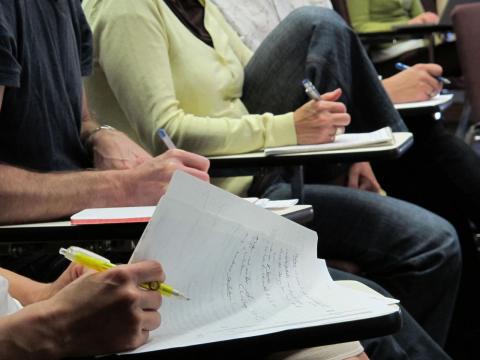

In September, a unique type of collision happened at TRIUMF. Instead of accelerated particles colliding into a target, ideas were bounced around a room, creating the environment for many new elements (or, more accurately, works of art), to be created.
On Friday, September, 7, four professional artists opened their minds to three TRIUMF researchers who shared knowledge about a particular physics topic. They came together for the official launch of the Raw Data project, a year long project that will travel through physics labs around the world. The project operates like an experiment, with two different ‘particles’ interacting (artists and scientists), where anything is possible in a collision.
Ingrid Koenig from Emily Carr along with Margit Schild and Elvira Hufschmid have designed the project, and are interested in the concepts of collisions, and experimentation. It’s from these concepts that Raw Data has arisen.
During this first “collision” of ideas, TRIUMF scientists Kendal Mahn, Reda Tafirout, and Abhishek Kumar presented the topic to artists Randy Lee Cutler, who will be working in text), David Khang (performance), Ben Reeves (image), and Stefan Smulovitz (sound). The artists wrestled with the subject, asked questions, and became familiar with the current science questions in that area. Over a couple of weeks, these artists will create art in different mediums, and will then pass it along to another set of artists. who will interpret and create new pieces as a response. It ends up being like a big game of telephone, played with not only words, but also science and art.
To keep this experiment unbiased, the specific topic is being kept hidden from the second and subsequent sets of artists and has only being shared with the people that were in the room during the first collision. After the physicists get a chance to interpret the art, the initial topic will be revealed.
To complete the project, these new piece of art will be shown to a different group of TRIUMF researchers, who will then be asked to interpret the art. And just like any experiment, new and exciting results can occur, possibly creating an entirely new type of expression. The second experimental run is planned for the new year in Germany with another particle physics lab with a different set of artists in.
For the hand-off, the second set of artists were randomly matched to those from the first set that attended the physics workshop. This transition involved a novel random-number generating technology; watch this clip of the Bird Lottery to see what happened.
-- By Jennifer Gagné, Web Publishing Coordinator
